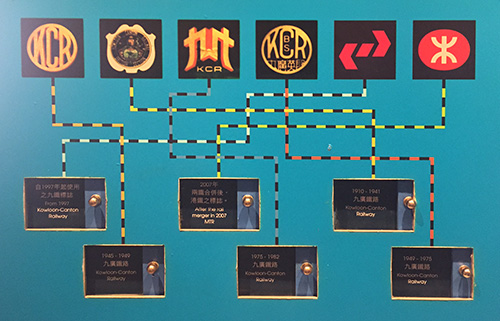A Dose Of Nostalgia In Tai Po Market
Amazing though it must seem to many of my blog fans, I’m old enough to remember the days when Hong Kong never had an MTR system, and when in order to get from the Island to Kowloon your only choice was to take the Star Ferry. It was in those days that you flew into the old Kai Tak airport, rather than the gleaming edifice on Lantau; and your nostrils were immediately assaulted by the smells of exotic food the moment you stepped off the plane.
It was in the mid 1970s, too, that I had the pleasure of taking the old Kowloon-Canton Railway (KCR) up to the border of Mainland China at Lok Ma Chau, there to stare in wonder into a closed world that was the Peoples’ Republic. Little did I ever imagine then that I too would one day be living and working in the PRC.
All these memories came flooding back on a recent trip to HK when I happened to be in Tai Po and saw a sign to a nearby railway museum. Railway? In the middle of the New Territories? Why here FGS? And then it suddenly struck me that Tai Po used to be the mid point on the KCR and what better place to have a museum?
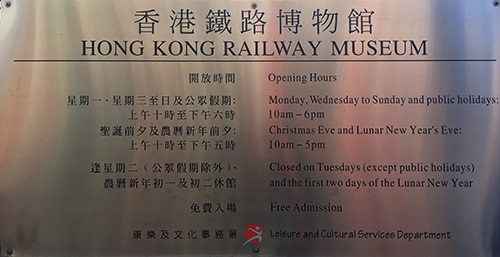
Hong Kong Railway Museum (香港鐵路博物館) occupies some 6,500 square metres, and is conveniently situated in the old Tai Po Market Railway Station. It’s easy to get to, and will fully occupy about 45 minutes to an hour of your time. It’s also free to get in, though among the visitor rules you are admonished not to pick any flowers inside the museum!
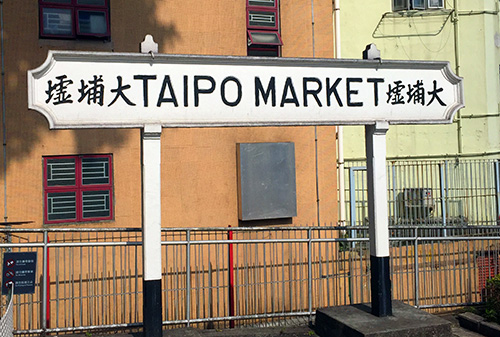
To get there, travel to Tai Po Market on the East Rail Line (45 minutes and HK$19 from Central). It’s then a 10-minute walk from Exit A2. (Walk straight ahead; turn right when you have to; take next left; follow the street round, turning left whenever you can.)
To read some of the whingers who post their thoughts online you’d think it was difficult to find. But common sense surely tells you that a rail museum is going to be situated slap bang next to the railway line, so if you aim to follow that northwards, you cannot fail to find it!
But for those who like to dot there Is and cross their Ts the address is 13 Shung Tak Street, Tai Po Market, Tai Po, Hong Kong. And if you have a GPS, its coordinates are 22°26′51″N 114°09′52″E.
Or an easier way, look out for the blue signs…
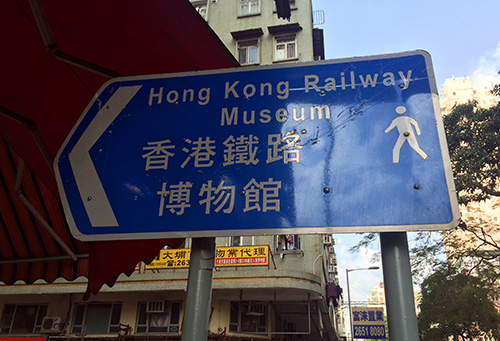
… or even the red signs.
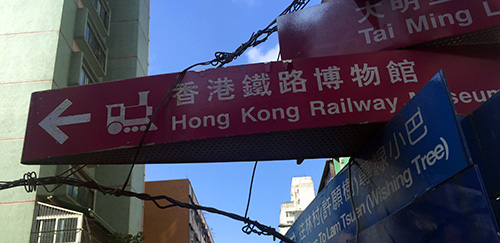
Got it? Think you can find it? Phew!
Well, when you (finally!) arrive, the first thing you see as soon as you step into the yard of the museum is the old station building ahead of you. Both inside and around it are a plethora of exhibits, including old photographs and artefacts, six historical coaches, a narrow gauge steam locomotive and a diesel electric engine.
When all the stations were being built along the railway to the standard design, for some reason it was decided that the Tai Po Market station would be built in the Chinese style. As you can see from the plaque above the entrance, it completed construction in 1913.
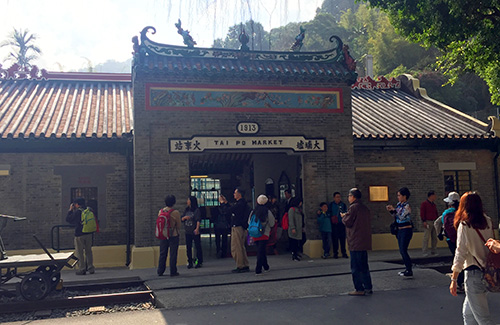
The British section of the KCR was opened in 1910 and as Tai Po was situated about halfway along the line it naturally developed into a general admin and trading centre. In 1911, it was decided that with the copious quantities of material left over from the building of the KCR, a branch line linking Fanling with Sha Tau Kok on the north eastern border with China could be built; and accordingly a two-ft wide narrow gauge railway was pretty quickly put together and opened in April 1912.
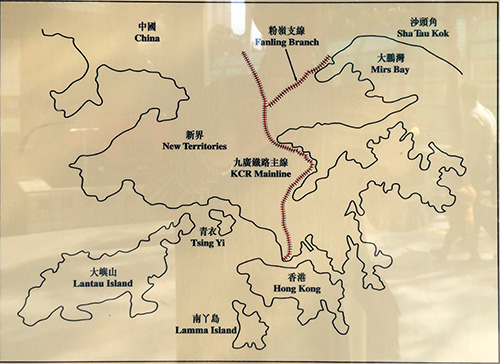
This entire 7¼ mile stretch of line took an average of 55 minutes and the passengers were expected to sit in carriages open to the elements, which is perhaps one reason it only survived for 17 years before closing in April 1928 when a new road was completed.
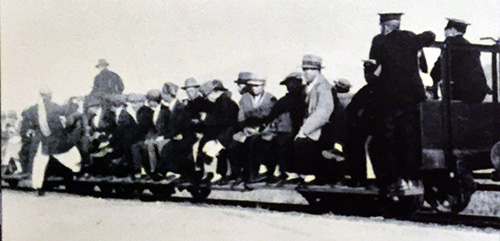
Two locomotives are on permanent show at the exhibition: The first is an EMD G12 Diesel-electric locomotive #51, introduced in Hong Kong in 1955, which is called "Sir Alexander", named after former Governor Alexander Grantham. More on this one later!
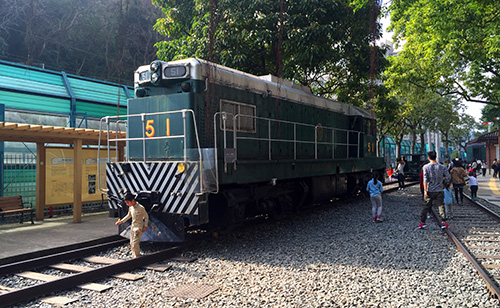
The other is a W. G. Bagnall 0-4-4PT narrow gauge steam locomotive, which was restored in 1995.
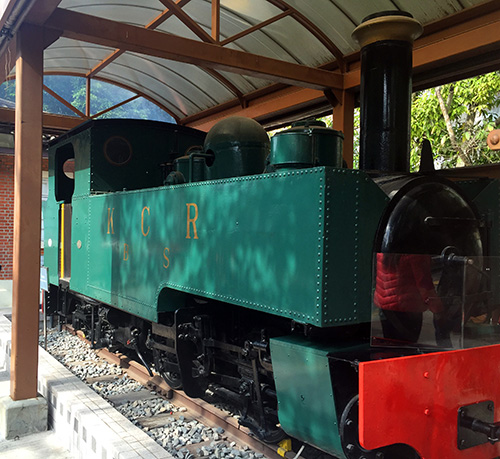
It’s a sweet little train really. And you can peer into the cab if you have a mind to…
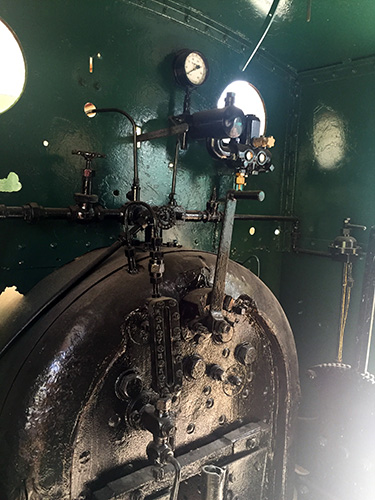
… as well as learn all about what goes into the making up of a Bagnall loco.
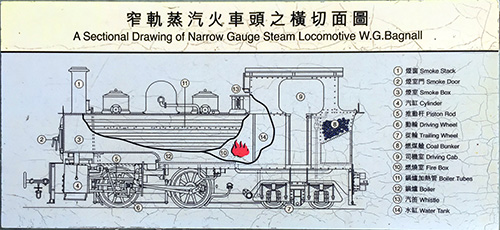
When the British part of the KCR opened in 1910 it owned four steam locomotives…
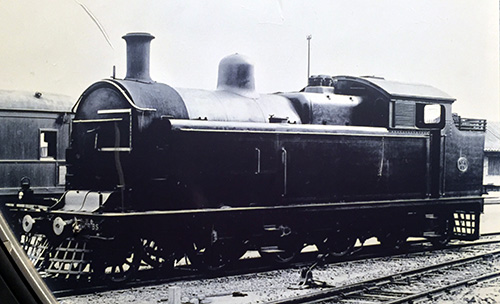
But this Bagnall is one of two that formerly ran on that narrow gauge line between Fanling and Sha Tau Kok. When it closed, the two were used by sugar mills in the Philippines.
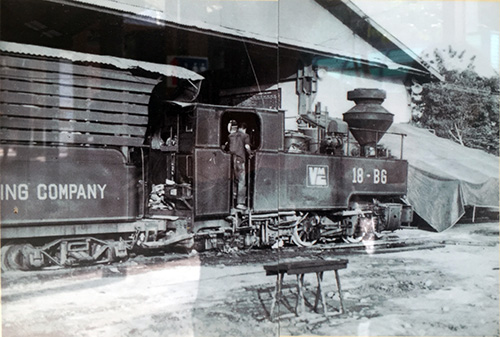
But luckily for posterity they were rescued and returned to their home.
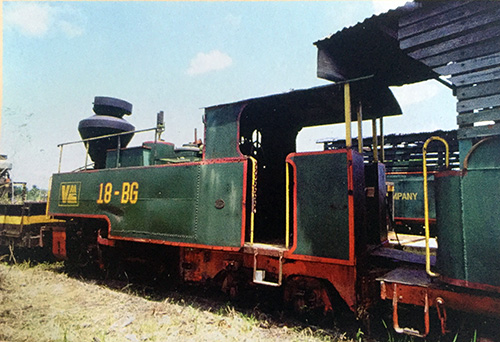
The other locomotive of the pair was also brought back to Hong Kong and is undergoing restoration.
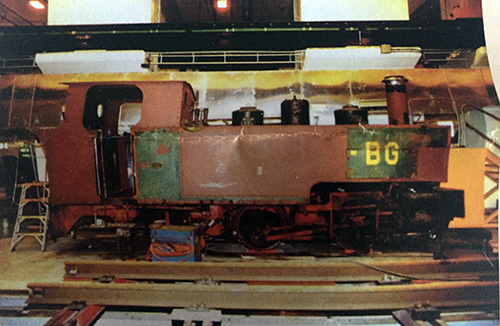
Outside in the museum, there is also a pump trolley...
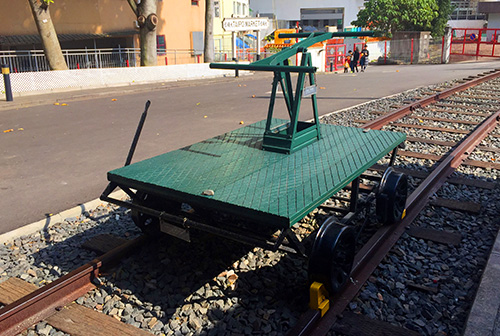
and a diesel-engined railcar.
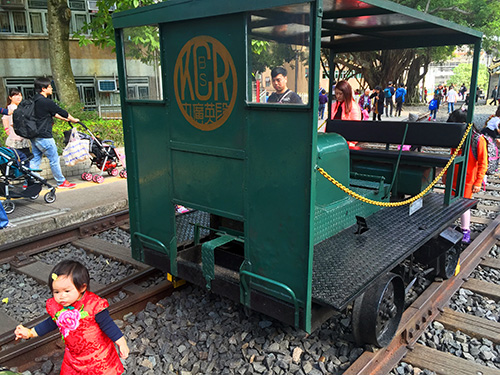
Apart from the outside exhibits, there is also an exhibition gallery that includes historical pictures and artefacts that help chronicle the story of how the railways developed in Hong Kong.
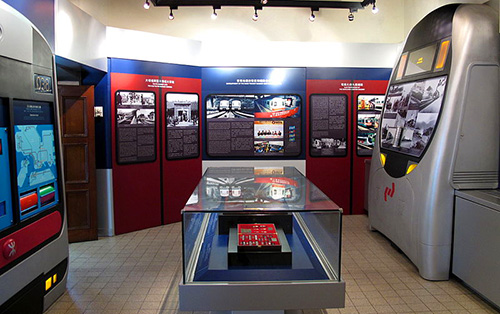
There are copious posters and official notices,
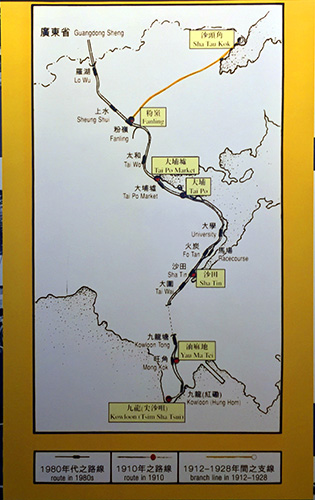
… not to mention timetables on display.
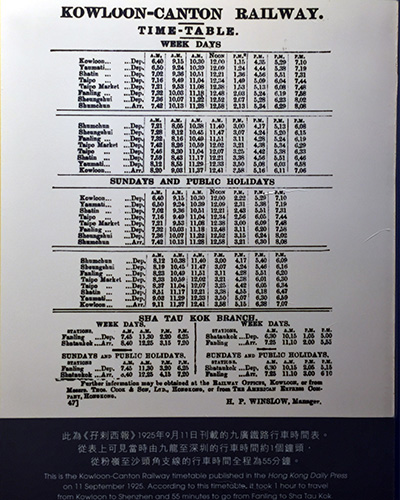
Blog fans will know how much I enjoy seeing the old B/W photos of yesteryear and this place never disappoints for a moment…
Here’s a photo of the opening ceremony of the KCR on October 1st 1910 in Tsim Sha Tsui, officiated by Sir Francis Henry May.
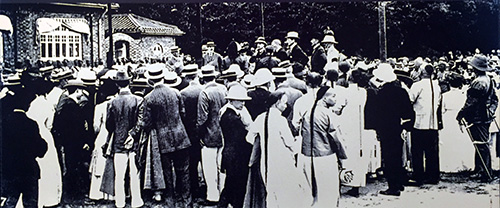
The British section was also known as the Hong Kong Railway and the bill for its construction ran to $12m. It had five stations along the line from Kowloon – at Yau Ma Tei, Sha Tin, Tai Po, Tai Po Market, and Fanling. The entire stretch was finally opened for service for through traffic with one terminus at Dashatou and the other at Tsim Sha Tsui on the very tip of Kowloon.
The official account informs us that “Political reasons forced the suspension of the through train passenger services on 14 Oct 1949” and Lo Wu replaced Dashatou as the terminus. Direct train services to Guangzhou finally resumed on 4th April 1979.
The Tsim Sha Tsui terminus in the early 20th century must have been quite a sight.
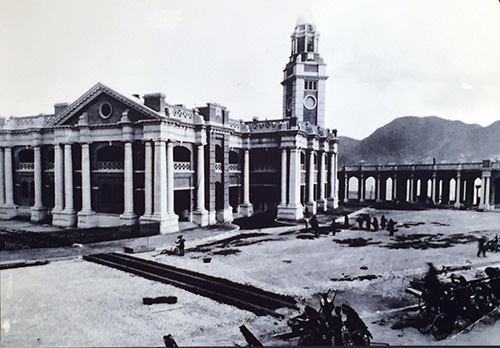
There’s even a model to show its construction.
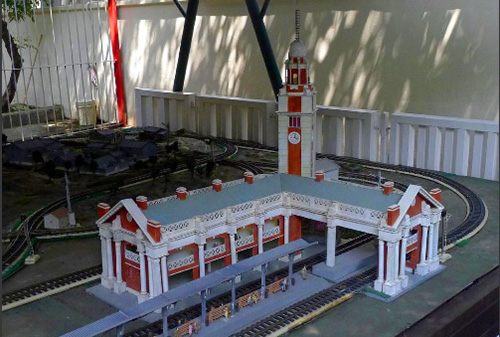
In fact there are copious photographs of all the old stations.
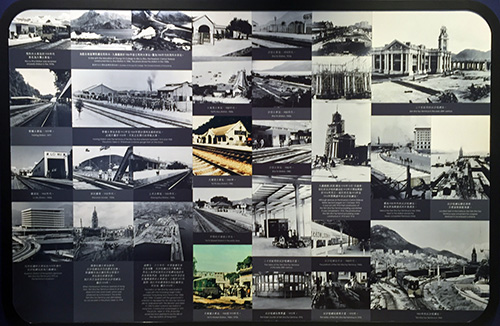
And not surprisingly there are loads of pictures showing the construction of the lines.
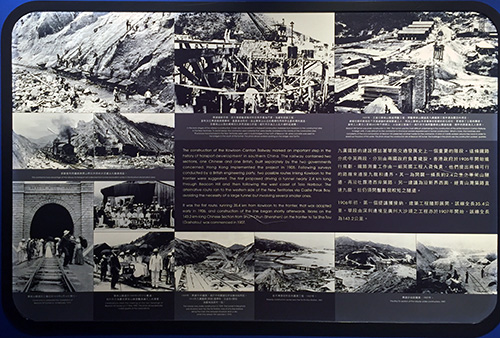
That construction marked an important step in the history of transport development in southern China. The railway contained two sections, built separately by the two governments concerned. Following surveys on the Hong Kong side, two possible routes linking Kowloon to the frontier were suggested. The route that finally won through consisted of a tunnel nearly 2.4km long through Beacon Hill and then along the coast to Tolo Harbour, running for 35.4 km. Work on the 143km-long Chinese section from Shum Chu (Shenzhen) to Tai Sha Tou (Dashalou) was commenced in 1907.
However, with the success of the railway, Tsim Sha Tsui was unable to cope with the incoming freight traffic by the 1950s and 60s. Accordingly, in 1975, Kowloon station at Hung Hom replaced Tsim Sha Tsui as the terminus in Kowloon. The entire Tsim Sha Tsui terminus was demolished – as seen in this 1978 photo, apart from the now-famous clock tower, which still stands at the western end of the Avenue of Stars.
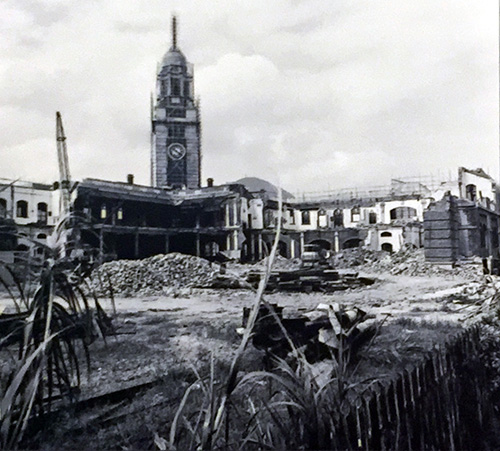
Meanwhile, let’s return to those diesels I mentioned a while back.
The KCR British section purchased two diesel electric engines from Australia in 1954 and they came into service in September 1955. They were numbered 51 and 52.
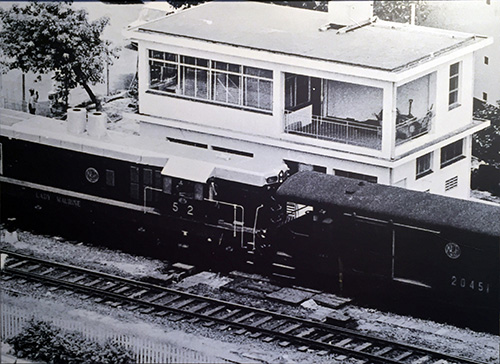
The 51 was called Sir Alexander and the 52 Lady Maurine, setting a precedent for all the diesel trains to be named after well-known figures of the day.
But what’s this? Can it really be true that in Hong Kong – at that time perhaps more patriotically British than Great Britain itself – could have made such a disastrous mistake as mounting the Union Jack upside down at an official launch ceremony? Apparently yes, if this old newspaper report is to be believed!
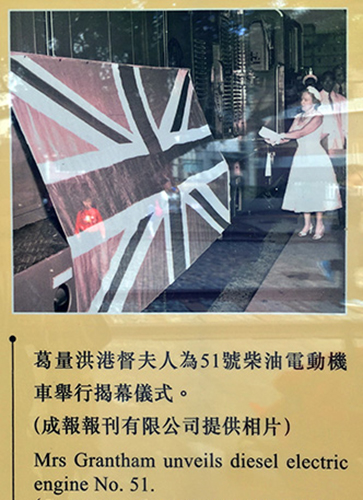
Unlike a steam locomotive, the engine of a diesel electric could be left at idling speed when the train was not in motion. This meant a great deal of fuel could be saved. For a return trip from TST to Lo Wu, a steam loco would use 180-230 gallons of fuel oil or 1½ tonnes of coal; but for the same journey a diesel electric loco needed just 44 gallons of diesel and only had to be refuelled twice a week. In addition two diesel locos could be coupled together to generate more power and haul a larger number of coaches or heavier goods. They might not look as romantic as steam locos, but they were certainly massively more efficient!
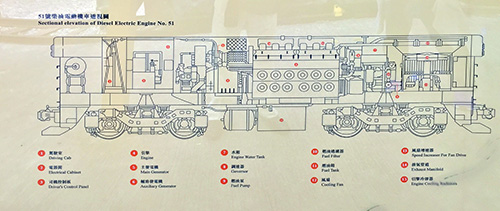
By 1976 the number of diesel-electrics in operation was 12. But I guess all good things must come to an end; and after ceasing to provide services in HK, engine no 51, the Sir Alexander – was sent back to Australia in 2006 where it continues in service to this day.
On the left of the display room, there is an exhibition room of train tickets and train models of not only KCR trains but also Japanese Shinkansen and Eurostar. (Not sure what the relevance of these is – maybe someone had some old models they were chucking out.)
Here are some first class tickets from the 1960s…
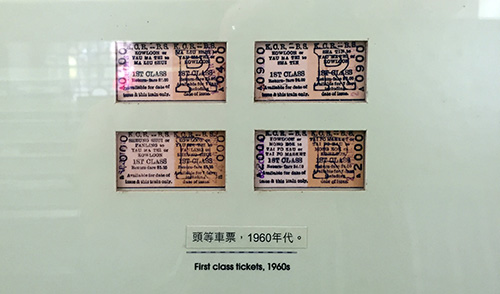
Or the more boring looking ones from a decade later.
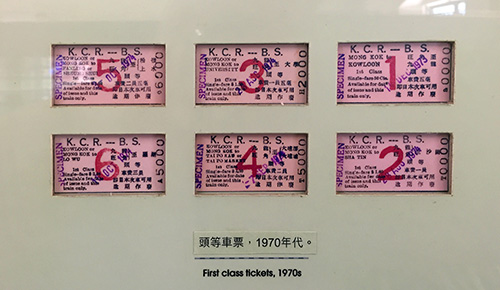
But no one seems to be admiring either the tickets or the Shinkansen / Eurostar models!
The further internal part of the room is a refurbished ticket office and signalling house. This is where everyone is heading!

Note the rattan ring with leather bag on the right containing the token which had to be passed from one engine driver to another to ensure there was no more than one cab on the line at any one time. Also the portable signal lamps on the right.
Also on display are the semaphore signalling levers used in the old station for controlling the trains.
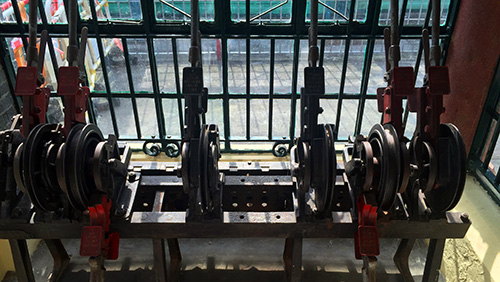
And naturally there are copious notes explaining how signals used to work, for those too young to remember.
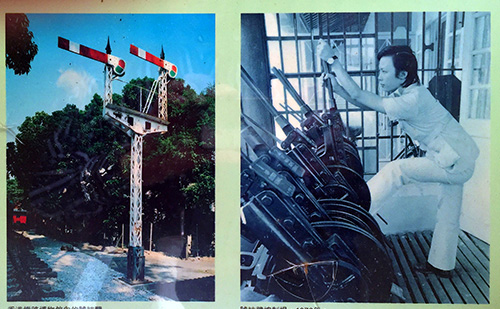
I mentioned earlier that the building of the station is unique in its architectural style among the KCR stations. It is of indigenous Chinese architectural style, with many small figures decorating the exterior, such as are commonly found in existing old southern Chinese temples. They have been given a good lick of paint to make them stand out!
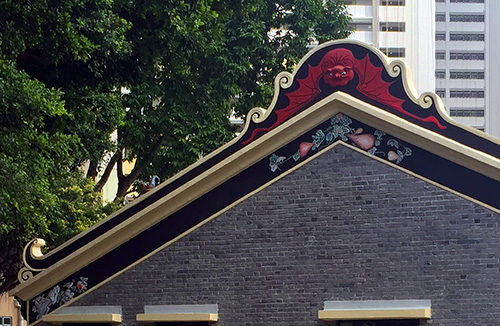
Further along the track, there are six coaches for public viewing including a 1911 third-class coach, a 1921 engineering brake coach, a 1955 third-class coach, a 1955 luggage coach, a 1964 first-class coach, and a 1974 ordinary-class coach, which might even have been the one I travelled on all those decades ago.
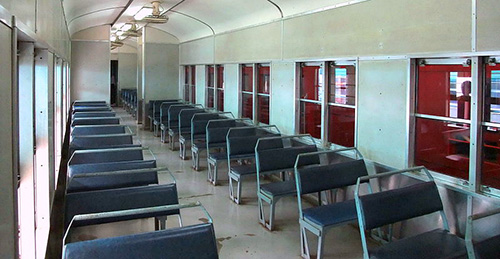
Hmm, the inside of the 1964 First-class compartment looks a lot more comfortable; though I guess you never know that, do you, until you have actually parted with your money!
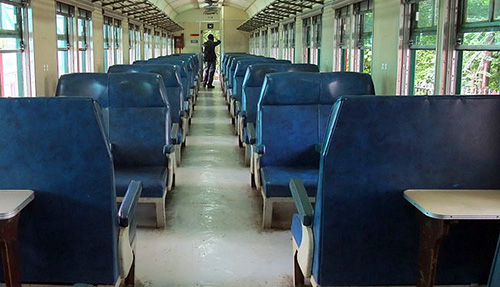
The KCR was finally electrified in 1983 when this station was taken out of service, with new stations being opened to the north (Tai Wo) and south (Tai Po Market) of it. And finally in 2006 the KCR was subsumed into a new joint company with the MTR. The end of an era!
